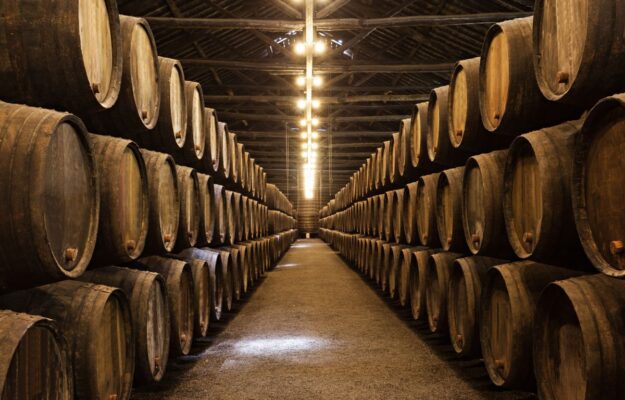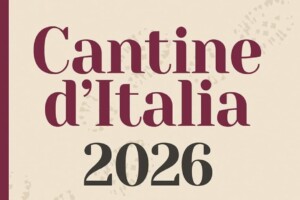That the Italian wine market in recent years is not going through such a bright phase is somewhat the common sentiment, but what do the companies’ balance sheets say? WineNews asked this directly to Luca Castagnetti (the audio interview here), of Studio Impresa, who conducted a survey on the numbers of 800 Italian wine companies, which collectively record revenues of 13.5 billion euros, producing an extensive Dossier, which analyzes the five-year period 2019-2023, published in the “Corriere Vinicolo” (the weekly magazine of Unione Italiana Vini - Uiv) released, today, with the title-cover “Financial statements 2023, governing uncertainty”. And this returns a scenario of a historically healthy sector, able to produce value even in 2023, but which is suffering heavy setbacks determined by exogenous factors and market changes.
“Turnover on an absolute level had a very small increase of just over 1% (+1.5% over 2022 and +23.5 over 2019, ed.), but we have to take into account the effect of inflation”, Castagnetti told us from “Wine2Wine”, the business forum by Veronafiere and Vinitaly, staged, today and tomorrow, in Verona, Italy, “but if we go to deflate these results, we see a decline of around 3.5-3.8% in terms of value. So, revenues are objectively down, but if we analyze profitability, in 2023 these 800 companies, across the board, show a small improvement”.
Veneto is the region with the highest turnover, exceeding 4.7 billion euros, with 28.08% growth over the five-year period. Four other regions, Emilia Romagna, Tuscany, Trentino and Piedmont, exceed 1 billion euros and show good growth rates on 2019. However, 2023 was a difficult year for most of them, except for Emilia-Romagna, where business revenues increased by 4.5%. Veneto saw a slight decline of -0.12%, while the other major producing regions had growth below the national average.
Also analyzed in the survey were financial expenses, which, with soaring interest rates, have contributed to greying the industry’s picture. For the professor, the latter are one of the “elements that most characterized 2023” because “the incidence on revenues doubled, going to exceed almost 1.8% on total revenues”, he says, “which means that that value produced that we were saying before, which somewhat improved this year, at the moment when we go to remove financial charges, shows less improvement (Ebit improving by 3.5% on 2022, from 4.86% to 5.03%, but worsening by -6.3% on 2019). So the companies have lost cash flow, and this is seen in the financial positions, because from an overall point of view, the system debt of these 800 companies has worsened from 2019 to today by 48%. A lot”. Summing up, “the organism functions because it is capable of producing income, but it is doing so with a steady and continuous burdening of the net financial position, which had improved in 2019-2021, while in 2022-2023 it is deteriorating significantly”. In fact, last year’s -24.7% Pfn (Net Financial Position) adds up to -28.05% in 2022.
And if the key word to identify the health of the sector for Castagnetti is “uncertainty”, it may be useful to identify those types of wine businesses that have more “certainty” than others. “At the level of sales, companies that make more than 50 million euros in turnover have increased by 46%, while the small ones have lost by 6%”, the expert explains, “so evidently today the larger companies make the market, but these are clearly not the ones that produce the greatest value because to date the small ones still have the capacity to produce greater value. And in particular it is the agricultural supply chain companies, which have on average double the profitability of the others”. In 2023, the Ebitda of agricultural is 22.71% compared to 9.85% of industrial.
However, the wine sector supply chain does not only include private companies; there are also cooperatives grappling with the same economic difficulties. There are 262 of them analyzed by the study, and for Castagnetti the problem in this case lies in the overly complex governance: “a private company is accountable to a very small corporate structure, and in a turbulent moment full of uncertainty like the current one, cooperatives struggle the most. Uncertainty must be governed by anticipating decisions, and in the cooperative world, more than other companies, there is a struggle to make quick decisions that are needed at this time”.
And even for 2024 the overall picture projected is, once again, not exactly bright. For companies in the sector, at every level, financial exposure is worsening, weighing down business. “There is a fact, consumption in the coming years will definitely not grow. On the contrary, they will drop”, Castagnetti says, “so entrepreneurs will have to learn how to do business in a market that drops, which is different from doing business in a market that grows because when the market grows there is room for everyone, even for improvisation, but when the market drops instead you absolutely have to make a difference compared to others, and often the difference will be made by perhaps going to enhance realities, skills and actions that in recent years have perhaps been less taken care of, I’m talking especially about some aspects related to business management. I very often find myself in companies that do not know their numbers and consequently not knowing their numbers necessarily travel on the entrepreneur’s instinct. Which is great and very often has led companies to great success, but at a time like this it makes a difference in making and anticipating a decision today instead of postponing it tomorrow because of instinct. However, when everyone makes decisions by instinct, the real difference will be between who can anticipate decisions today because we are in an environment of uncertainty and the only way to deal with uncertainty is to anticipate decisions today in a way that makes the company stronger no matter what happens”.
Finally, for “Corriere Vinicolo” editor Giulio Somma, analyzing the Dossier, “the need to work on international promotion to broaden demand becomes crucial, with CMO programs becoming more essential than ever for the development of companies in key foreign markets”.
Copyright © 2000/2025
Contatti: info@winenews.it
Seguici anche su Twitter: @WineNewsIt
Seguici anche su Facebook: @winenewsit
Questo articolo è tratto dall'archivio di WineNews - Tutti i diritti riservati - Copyright © 2000/2025









































































































































































































